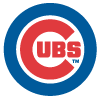Last time, I began to discuss how average exit velocity on fly balls can be used to help guess how some batters will fare in the power department in 2022. Now I'd like to discuss another set of names.
But first…
Recently, an interesting question was posed in the Rotojunkie Forum.
Why do the Rockies underperform actual HRs vs expected HRs?
Since Statcast xHR is part of the analysis at hand, I figured it would be useful to answer it here as well. The question included a link to the Rockies Statcast page with the following data:
| Player | Actual HR | xHR | HR-xHR |
|---|---|---|---|
| Trevor Story | 24 | 37.4 | -13 |
| C.J. Cron | 28 | 35.1 | -7 |
| Ryan McMahon | 23 | 27.4 | -4 |
| Charlie Blackmon | 13 | 22.3 | -9 |
| Elias Diaz | 18 | 21.9 | -4 |
| Garrett Hampson | 11 | 17.6 | -7 |
| Sam Hilliard | 14 | 15.4 | -1 |
| Brendan Rodgers | 15 | 13.5 | 2 |
| Dom Nunez | 10 | 12.5 | -3 |
| Connor Joe | 8 | 10.9 | -3 |
| Joshua Fuentes | 7 | 9.3 | -2 |
| Raimel Tapia | 6 | 9.1 | -3 |
| Yonathan Daza | 2 | 5.7 | -4 |
| Rio Ruiz | 3 | 2.1 | 1 |
| Chris Owings | 1 | 2.1 | -1 |
| Alan Trejo | 1 | 1 | 0 |
| German Marquez | 1 | 0.9 | 0 |
| Chi Chi Gonzalez | 0 | 0.4 | 0 |
| Matt Adams | 0 | 0.4 | 0 |
| Colton Welker | 0 | 0.4 | 0 |
| Antonio Senzatela | 0 | 0.1 | 0 |
The chart key defines xHR as Ballparks Gone At/30. This is confusing.
Think of it this way. Statcast measures each
Last time, I began to discuss how average exit velocity on fly balls can be used to help guess how some batters will fare in the power department in 2022. Now I'd like to discuss another set of names.
But first…
Recently, an interesting question was posed in the Rotojunkie Forum.
Why do the Rockies underperform actual HRs vs expected HRs?
Since Statcast xHR is part of the analysis at hand, I figured it would be useful to answer it here as well. The question included a link to the Rockies Statcast page with the following data:
| Player | Actual HR | xHR | HR-xHR |
|---|---|---|---|
| Trevor Story | 24 | 37.4 | -13 |
| C.J. Cron | 28 | 35.1 | -7 |
| Ryan McMahon | 23 | 27.4 | -4 |
| Charlie Blackmon | 13 | 22.3 | -9 |
| Elias Diaz | 18 | 21.9 | -4 |
| Garrett Hampson | 11 | 17.6 | -7 |
| Sam Hilliard | 14 | 15.4 | -1 |
| Brendan Rodgers | 15 | 13.5 | 2 |
| Dom Nunez | 10 | 12.5 | -3 |
| Connor Joe | 8 | 10.9 | -3 |
| Joshua Fuentes | 7 | 9.3 | -2 |
| Raimel Tapia | 6 | 9.1 | -3 |
| Yonathan Daza | 2 | 5.7 | -4 |
| Rio Ruiz | 3 | 2.1 | 1 |
| Chris Owings | 1 | 2.1 | -1 |
| Alan Trejo | 1 | 1 | 0 |
| German Marquez | 1 | 0.9 | 0 |
| Chi Chi Gonzalez | 0 | 0.4 | 0 |
| Matt Adams | 0 | 0.4 | 0 |
| Colton Welker | 0 | 0.4 | 0 |
| Antonio Senzatela | 0 | 0.1 | 0 |
The chart key defines xHR as Ballparks Gone At/30. This is confusing.
Think of it this way. Statcast measures each flyball distance and overlays it into all 30 MLB parks. I don't know how they handled Dunedin/Buffalo/Toronto, nor stuff like the Field of Dreams game, but it doesn't matter for this explanation. They determine the number of venues each flyball would have been a homer, based solely on distance. Say it was far enough to be gone in 15 parks. It has an xHR of .5 (15/30).
With Rockies, it's not about the homers, but the flyballs going far enough to be out of most parks, but not Coors. A 425-foot flyball could be a double, or even an out at Coors, but would be gone just about everywhere else. Say it was a homer in 27 parks. It gets credited as .9 xHR, but it was off the wall or caught in Coors.
Just about every homer in Coors is 1.0 xHR, since it was far enough to be gone everywhere (30/30).
Trevor Story hits a ton of fly balls, career average 45 percent. He's going to launch several that are far enough to be souvenirs almost everywhere else, but are doubles, triples or outs at Coors.
These go on his ledger, so his xHR reflects all these non-HR fly balls that are given partial credit towards being a home run.
This time of the season, you'll no doubt see a bunch of pieces comparing xStats to actual. Before trusting the explanations and results, you need to be confident the writer isn't misapplying the xStats. Story wasn't unlucky last season, at least not in the sense he "should have" hit 13 more home runs per Statcast xHR. It's an artifact of playing in Coors.
This is not to say the Statcast xHR is useless; it just needs to be kept in context with the player's home venue in mind.
OK, let's talk more players.
Granted, Crawford isn't a big difference maker in mixed leagues, but he could be important in NL-only formats, especially if his power surge is real. He hadn't hit more than 14 homers in a season since 2015 when he clubbed 21. Last season, at 34 years old, Crawford set a personal best with 24 long balls. His HR/FB dropped from 2020's mark, but his flyball percent spiked.
Crawford's overall average exit velocity (AEV) was just 88.6 mph. However, his flyball AEV was a robust 94.8 mph, over two points above his career average. His groundball mark was a career low, indicative of adding uppercut to his swing, which is consistent with his flyball increase.
Here are Crawford's flyball AEV since 2015:
Season | FB AEV |
|---|---|
2015 | 95 |
2016 | 91.1 |
2017 | 92.9 |
2018 | 89.4 |
2019 | 91.7 |
2020 | 91.3 |
2021 | 94.8 |
Even though it was previously shown parsing by month introduces some variance, here are 2021's monthly splits.
| Month | FB AEV | HR |
|---|---|---|
| April | 94.8 | 4 |
| May | 98.6 | 7 |
| June | 98.8 | 6 |
| July | 93 | 1 |
| August | 91.4 | 1 |
| Sept/Oct | 92.9 | 5 |
I don't like reading so much into small samples, but the bulk of Crawford's power surge came early with over half his homers coming in May and June when his flyball AEV maxed out. The last month appears to be variance. Did he get tired? Did he change his approach? Is this all noise?
Even though the AEV over last three months dipped, they are still a tad above previous seasons, suggesting Crawford's floor is higher than coming into last year. If he were younger, I might suggest his ceiling is maintaining (or approaching) May and June for the whole season, but that's generous.
VERDICT: Three-year averages are going to organically raise the mean projection. Based on the July through the end of the season numbers, there is a solid chance Crawford exceeds the Marcel-type projection, so home run expectations should be close to last season, but with a lower batting average.
If you don't know the story with Home Willy and Road Willy, click on his name to read his 2022 outlook. The question requiring an answer is, how can we use his 2021 splits to baseline 2022?
Here is Home Willy and Road Willy's splits with Tampa, beginning in 2018:
| Rays | #FB | FB AEV | HR |
|---|---|---|---|
| Home | 91 | 92.5 | 15 |
| Away | 88 | 92.5 | 22 |
OK, just about the same number of flyballs, the same exit velocity and 50 percent more homers on the road. Now the same with the Brewers:
| Brewers | #FB | FB AEV | HR |
|---|---|---|---|
| Home | 45 | 93.1 | 10 |
| Away | 46 | 94.1 | 9 |
Please note Adames flyball percent was up ten points last season, explaining why the number of flyballs relative to games was higher with the Brewers.
Small sample aside, something happened. Confidence could have played a part, but Adames was more productive with Milwaukee. From a projection theory point of view, I want to know if the improvement is more than strict park factor translation. The uptick in flyball AEV suggests it is.
On paper, the change in venues should increase Adames homers by seven percent. Sparing the calculus, Adames' improvement was more than what's accounted for by the move from the AL East and The Trop to the NL Central and Miller Park American Family Field.
Therefore, from a projectionist point of view, neutralizing Adames' Tampa and Milwaukee numbers, then converting the weighted average to Milwaukee will undercut his projected homers, assuming the improvement last season was real and sustainable.
That last part is the key. Basically, we're talking regression. How much should his time in Tampa be regressed toward that in Milwaukee? Again, sparing my work (trust me, I have it), Adames hit a homer every 20.65 plate appearances with Milwaukee. It's tough to compare year to year with the different baseballs and Adames growing flyball rate, but here are the boundaries:
| Team/year | HR/PA |
|---|---|
| Tampa 2018-2020 | 26.4 |
| Tampa 2021 | 28.4 |
| Milwaukee 2021 | 20.7 |
Now the question is, how much should 27 HR/PA be regressed towards 20.7? I like using a 50 percent regression until shown otherwise, so I expect 1 HR every 23 or 24 plate appearances. This assumes Adames continue to loft flyballs at a 40 percent clip.
VERDICT: This is more finesse than muscle. Early projections are shorting Adames, but early drafters are buying into the new Adames. It's a matter of reading the room. If someone is a "what have you done for me lately" drafter, he'll be off the board early. If the room is following projections, there's a nice buy opportunity.
Fancy charts and graphs aren't required for everyone's analysis. This one is straightforward. Garcia's overall AEV is 80th percentile so most will intuit his power is sustainable. Of course, if you're reading this, you know to care about flyball AEV and sure enough, it's 96.3 mph, closer to 90th percentile, so yes, Garcia's power is real.
VERDICT: The power may be real, but remember overall AEV correlates very little to BABIP and the indicators suggest Garcia's BABIP was artificially high last season, so while his homers should repeat, be aware his average could dip.
This one is a little weird. I earmarked Seager for discussion due to a big uptick in flyball AEV last season. An increase in flyball percent usually dovetails, along with a drop in groundball AEV. Here are the numbers:
| Year | GB AEV | FB AEV | GB% |
|---|---|---|---|
| 2015 | 87 | 90.7 | 53.2% |
| 2016 | 88.3 | 92.3 | 46.3% |
| 2017 | 83.9 | 93 | 42.1% |
| 2018 | 88.7 | 90.6 | 44.7% |
| 2019 | 84.1 | 91.6 | 39.0% |
| 2020 | 86.3 | 93.9 | 38.4% |
| 2021 | 85.7 | 96.3 | 45.9% |
Groundball percent is included, even though we're more interested in flyballs because there is less of a discrepancy in distinguishing grounders and balls in the air than discerning line drives from flyballs. With Seager, it's contrary to what's expected. His added flyball AEV isn't due to more of an uppercut stroke. It could be health, or improving pitch recognition.
According to my estimation of xHR, Seager was deprived of around seven long balls based on flyball distance.
Complicating matters is a new venue. Dodgers Stadium is a pitcher's park, but it significantly elevates left-handed power. The move to Globe Life Field, at least on paper, should cost Seager some long balls. However, if he can manage to loft more batted balls without losing flyball AEV, there is some serious power upside, and the overall pitching in the AL West isn't as skilled as the NL West, though Seager won't enjoy nine or 10 games in Colorado.
VERDICT: If Seager were still with the Dodgers, this would be easy - expect more homers while the market would likely not account for the added flyball AEV. However, the misperception Dodgers Stadium suppresses power could work in the market's favor as many will assume Seager hits more dingers in the new venue. The two offset, at least in terms of price. However, I'm intrigued by the chance Seager indeed puts more balls in the air with an elevated AEV. To borrow a notation from Ron Shandler's Baseball Forecaster... UP: 30 HR
Overall, Grandal's season was whack. It is detailed quite well in his 2022 site outlook (no, I didn't write it). Let's focus strictly on the power element.
| Year | FB AEV | GB AEV |
|---|---|---|
| 2015 | 94 | 90.4 |
| 2016 | 94.5 | 89.6 |
| 2017 | 92.4 | 84.2 |
| 2018 | 93.3 | 84.7 |
| 2019 | 93.5 | 87.8 |
| 2020 | 92.9 | 84.9 |
| 2021 | 97 | 89.2 |
Grandal's flyball rate was consistent with previous campaigns, suggesting he didn't alter his swing plane. Ergo, he simply hit the ball harder overall as his GB AEV also increased. Maybe Grandal's bat speed quickened due to less wear and tear from the previous season. His walk rate was even higher than usual, so perhaps it was being even pickier, then cutting it loose when he got his pitch.
It's noteworthy Grandal's flyball AEV dropped a bit after coming back from injury, but it was still elevated.
VERDICT: If you didn't just read Grandal's outlook, I'm in lockstep with the final sentence - "Pay for the steady year-over-year production knowing the elite, healthy version is hiding."
Here are Kelenic's monthly splits from his rookie season:
| Month | No. Flyballs | FB AEV |
|---|---|---|
| May/June | 20 | 89.4 |
| July | 20 | 89.4 |
| August | 20 | 94.2 |
| Sept/Oct | 27 | 96.5 |
As if another reason was needed to write off his freshman season as stuff that happens to a 21-year-old rookie, it's apparent Kelenic gained confidence as the season progressed.
VERDICT: For perspective, here are some players with a flyball AEV between 96 and 97 mph: Yordan Alvarez, Aaron Judge, Vladimir Guerrero, Bryce Harper, Adolis Garcia, Juan Soto, Nelson Cruz and Adam Duvall. This isn't to say Kelenic will maintain his Sept/Oct level for an entire season, but if he does...
Urias' Statcast card is rather unimpressive. However, his 2021 follows the uppercut profile of more flyballs with a greater AEV with the corresponding drop in groundball AEV. He also was more aggressive within the zone, chopping four points off his K-rate.
VERDICT: Especially in leagues where multiple-eligibility players are extra useful, Urias is a great target to cover corner and middle since the lack of red on his Statcast page will wrongly sour too many drafters.
Contreras is the second backstop to exhibit the following trend. Like Grandal, his overall AEV spiked with both his FB AEV and GB AEV improving, without a significant change in groundball percent
| Year | FB AEV | GB AEV | GB% |
|---|---|---|---|
| 2016 | 92.3 | 84.1 | 54.3% |
| 2017 | 97 | 83.8 | 53.3% |
| 2018 | 90.8 | 85.7 | 52.0% |
| 2019 | 94 | 84.4 | 50.2% |
| 2020 | 92.1 | 85.9 | 47.4% |
| 2021 | 97.3 | 89.6 | 50.2% |
Without knowing the impetus for the AEV spike, it's tough to know what to do with it, but if Contreras can maintain the gain and muster a few more flyballs, there's latent power in his stick.
VERDICT: If you're in the 'pay for catching' class, Contreras is an intriguing target due to his power upside.
Varsho is another example of a misleading overall AEV, as he posted a bigger than average delta between his flyball AEV and groundball AEV.
With 300 PA, Varsho is a top-15 catcher. With 450, he's top five. With 550, he's the No. 1 fantasy catcher, at least on paper.
VERDICT: It's obviously risky, with Carson Kelly entrenched as the Diamondbacks primary receiver, but if you feel Varsho can handle the outfield (I do), he's a game-changer at the position.




































